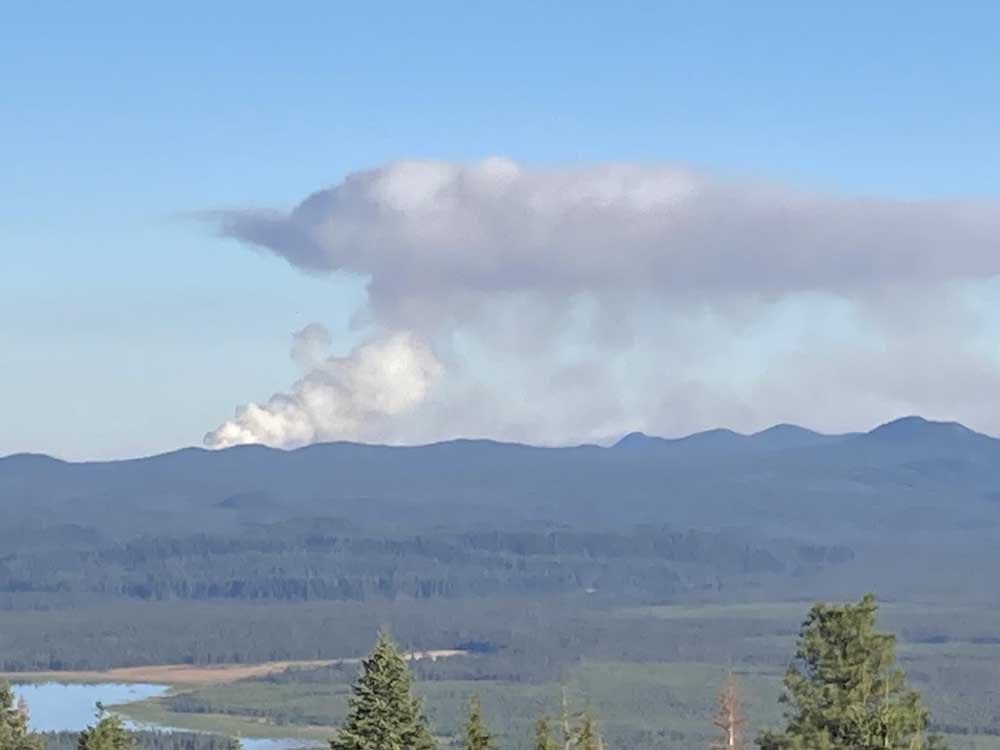UPDATE: Pete’s Lake Fire now over 2,000 acres in hot, dry conditions
Published 9:45 am Saturday, September 16, 2023

- The Pete’s Lake Fire burning west of Bend had grown to 3,009 acres as of Monday.
UPDATE 9:15 a.m. Saturday, Sept. 16:
The Pete’s Lake Fire in the Three Sisters Wilderness Area grew Friday from 320 acres to more than 2,000 acres in dry, hot and windy conditions, according to Central Oregon fire officials.
The fire has been burning about 5 miles west of Elk Lake since sparked by lightning on Aug. 25.
Over the weekend, winds are predicted to change, pushing the fire back east into areas already burned, according to Central Oregon Fire Info, an interagency wildfire team. But hot, dry weather is expected throughout the weekend, which means the fire will likely continue to grow and produce a visible smoke column.
The Level 3 (Go Now) evacuation notice is still in place for all areas west of the Cascade Lakes Highway from the Lucky Lake Trailhead north to the Mirror Lake Trail, including areas around Lucky Lake, Leech Lake, Doris Lake, Blow Lake and Mirror Lakes.
______________________________
Much of Central Oregon will be under a fire weather watch Saturday as hot and dry conditions are expected over the weekend.
However, the region will likely evade wildfire smoke from the Pete’s Lake Fire, which grew more than 100 acres Thursday night.
For several days, the size of the fire — burning about 5 miles west of Elk Lake — held at 320 acres, but it grew to 487 acres Thursday night. The growth was not unexpected because of recent warm and dry conditions, said Jean Nelson-Dean, a spokesperson for Central Oregon Fire Management Service.
“It’s basically doing what a fire historically would do in that area, which is a positive because it’s reducing fuel loads back in there in wilderness,” Nelson-Dean said.
The overnight growth was neither dramatic nor intense, Nelson-Dean said. But if it became so, and if the fire threatened recreation facilities, structures or endangered species, fire crews would have responded. The fire, which is in the Willamette National Forest in the Three Sisters Wilderness area, was caused by lightning on Aug. 25.
Original trail and sno-park closures remain in place as a result of the Pete’s Fire. Those include the Wanoga and Kapka sno-parks, which are being used for fire crews, and portions of the Deschutes and Willamette national forests that immediately surround the fire.
The Cascade Lakes Highway between Elk Lake and Lava Lake has been reduced to one lane for several weeks for fire response crews to clear brush along the highway. It’s expected to open to two-lane traffic Saturday morning, Nelson-Dean said.
However, flaggers and equipment will still be present, so Nelson-Dean said drivers should be aware.
Helicopters dropped buckets of water on the fire Thursday, according to the fire management service. Simultaneously, a smoke column from the fire was visible from Bend. People can expect to see smoke over the next few days.
But that smoke, and smoke from other large wildfires on the Willamette National Forest, likely will stay west of the Cascades and shouldn’t diminish Central Oregon’s air quality, according to Greg Svelund, a spokesperson for the Oregon Department of Environmental Quality.
“It looks really positive for Central Oregon for air quality this weekend,” he said.
Even as Central Oregon approaches fall weather, fire season continues, which wasn’t the case about a decade ago, Svelund said.
Unhealthy air quality days in Central Oregon and across the state are becoming more frequent with an average of 12 days per year reaching unhealthy levels for sensitive groups, he said.
“The fires are bigger than we’ve seen in the past, and there’s more of them,” Svelund said.
A fire weather watch is in effect for much of Central Oregon from 10 a.m. to 8 p.m. Saturday, according to the National Weather Service.
“It’s an increased potential for both new starts and increasing growth on existing fires,” said Thomas Schuldt, a meteorologist for the weather service’s office in Pendleton.
The watch applies to eastern Deschutes County, central and eastern Jefferson County and all of Crook County, Schuldt said.
Cooler temperatures and a slight chance of precipitation are forecast into next week, he said, bringing back more seasonable weather and less of a risk for increased fire activity.








